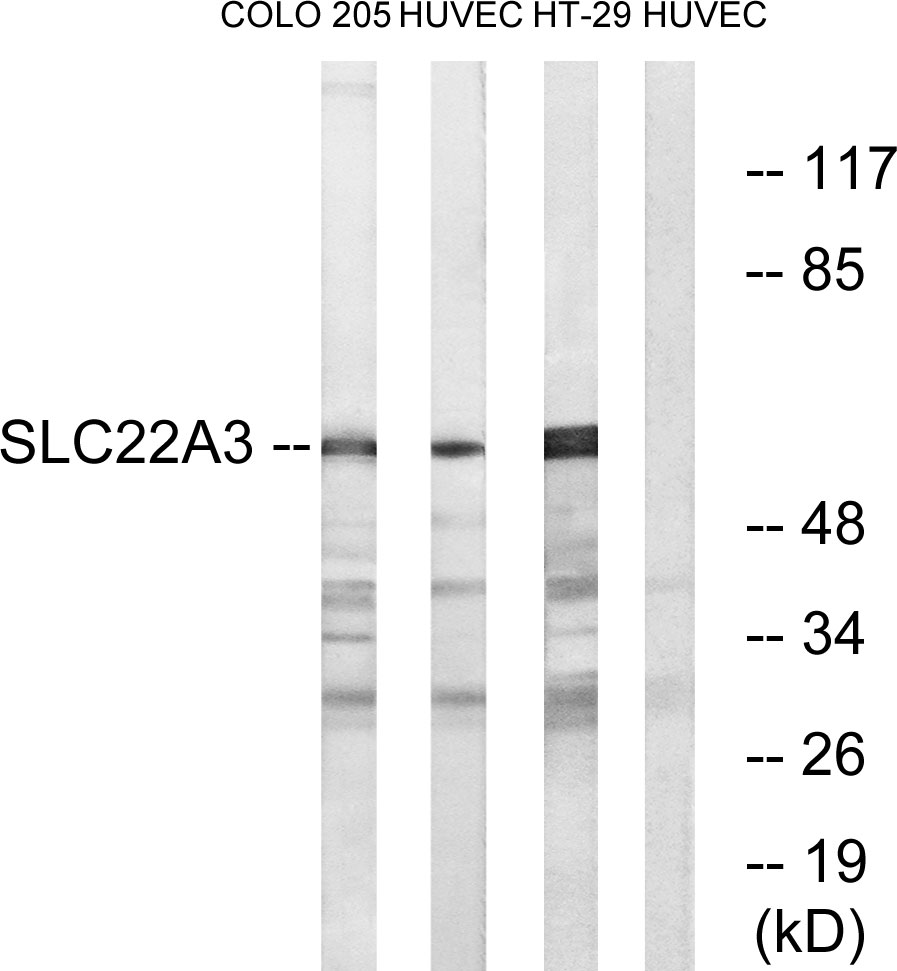产品名称
OCT3 Rabbit Polyclonal Antibody
别名
SLC22A3; EMTH; OCT3; Solute carrier family 22 member 3; Extraneuronal monoamine transporter; EMT; Organic cation transporter 3
蛋白名称
Solute carrier family 22 member 3
存储缓冲液
Liquid in PBS containing 50% glycerol, 0.5% BSA and 0.02% New type preservative N.
Human Gene Link
http://www.ncbi.nlm.nih.gov/sites/entrez?db=gene&term=6581
Human Swissprot No.
O75751
Human Swissprot Link
http://www.uniprot.org/uniprotkb/O75751/entry
Mouse Swissprot No.
Q9WTW5
Mouse Swissprot Link
http://www.uniprot.org/uniprot/Q9WTW5
免疫原
The antiserum was produced against synthesized peptide derived from human SLC22A3. AA range:275-324
特异性
OCT3 Polyclonal Antibody detects endogenous levels of 40819 protein.
稀释度
WB 1:500 - 1:2000. ELISA: 1:10000. Not yet tested in other applications.
宿主
Polyclonal, Rabbit,IgG
背景介绍
Polyspecific organic cation transporters in the liver, kidney, intestine, and other organs are critical for elimination of many endogenous small organic cations as well as a wide array of drugs and environmental toxins. This gene is one of three similar cation transporter genes located in a cluster on chromosome 6. The encoded protein contains twelve putative transmembrane domains and is a plasma integral membrane protein. [provided by RefSeq, Jul 2008],
组织表达
Expressed in placenta, skeletal muscle, prostate, aorta, liver, fetal lung, salivary gland, adrenal gland, kidney and brain cortex. No expression detected in spleen.
细胞定位
Membrane; Multi-pass membrane protein.
功能
function:Mediates potential-dependent transport of a variety of organic cations. May play a significant role in the disposition of cationic neurotoxins and neurotransmitters in the brain.,similarity:Belongs to the major facilitator superfamily. Organic cation transporter family.,tissue specificity:Expressed in placenta, skeletal muscle, prostate, aorta, liver, fetal lung, salivary gland, adrenal gland, kidney and brain cortex. No expression detected in spleen.,
纯化
The antibody was affinity-purified from rabbit antiserum by affinity-chromatography using epitope-specific immunogen.


